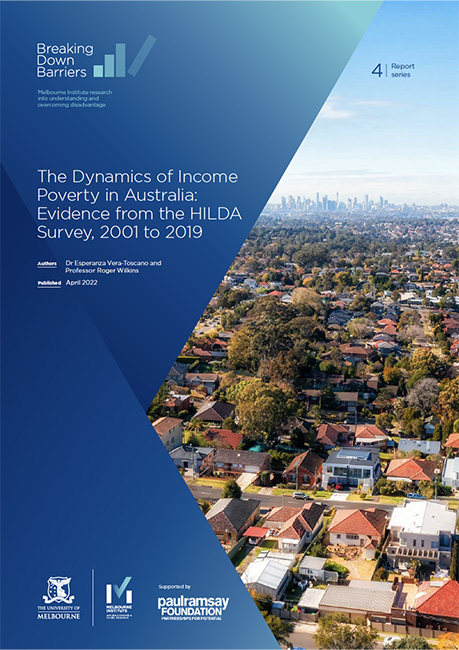The Dynamics of Income Poverty in Australia
Incomes of Australians have on average risen substantially over the last three decades and continue to trend upwards. However, some in the community continue to be left behind.

In this report, we confirm that persistent poverty is a significant phenomenon in Australian society. Looking back over the first two decades of this century, we find that around 13% of the population are persistently poor, defined as continually having an income less than 60% of the median income.
Understanding what drives poverty and its persistence is an essential first step to alleviating it. Using data from the longitudinal Household, Income and Labour Dynamics in Australia (HILDA) Survey, this report describes the extent and nature of persistent poverty and look at why people descend into poverty, why some people remain in poverty and others escape poverty, and why some of those who escape poverty remain out of poverty while others fall back into poverty.
Consistent with cross-sectional studies of poverty, we find that persistent poverty is more prevalent among women, single-parent families, the elderly, Indigenous Australians, people with a disability, the less-educated, and people living in more disadvantaged regions.
We often hear that a job is the best way to get someone out of poverty. In many cases this is true, and anti-poverty strategies must indeed prioritise improving access to jobs. But this is not the complete solution. For many people, particularly those with disability or substantial caring responsibilities, the income support system remains crucial to addressing persistent poverty.
Read the full report Request a briefing
AUTHORS
Dr Esperanza Vera-Toscano
Professor Roger Wilkins